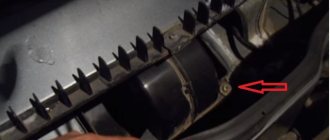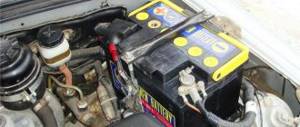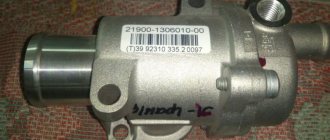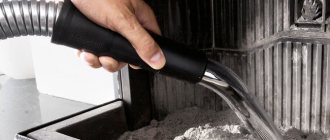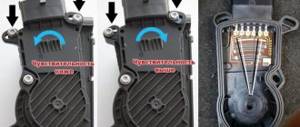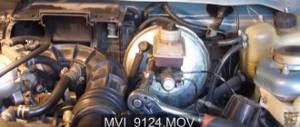Signs of a malfunction of the vacuum brake booster of the VAZ 2114
Brake booster malfunctions have several fatal negative consequences:
- Significant reduction in vehicle control during braking cycles. In the absence of the amplifier, the load on the gas pedal increases proportionally - the pedal goes hard, and the braking effect is significantly reduced. For an unprepared driver, such behavior of the car can come as a shock and lead to a traffic accident due to the increased braking distance; If the brakes malfunction, a car loses significant braking potential and becomes practically uncontrollable;
- The gas pedal is slow. When moving, the pedal is very difficult to press. This is a clear sign of a malfunction of the amplifier housing diaphragm chamber. In this case, the car must be operated with great care, since it has lost a certain effectiveness of the braking system;
- A sign indicating a faulty brake system lights up on the dashboard at short intervals. This symptom may also relate to other malfunctions in the brakes, but in combination with a tight brake pedal it clearly indicates a faulty booster. The electronic unit of the car constantly monitors all systems for operability (and although on the VAZ 2114 model this unit has not been considered modern for a long time with its functions, it copes with its functions at a good functional level and with high efficiency despite the small number of sensors);
Deterioration in the braking performance of the system, along with other signs, indicates a direct involvement of a faulty brake booster in the risk of an accident. This symptom is the main one among all the others; however, operating a car with a very weak brake system is very dangerous - the circuits in this case do not receive additional force and cannot effectively brake.
Troubleshooting most often involves replacing the faulty element with a new unit - this will save repair time, since resuscitation of an old product will require no less time and a slightly lower cost of parts. That is why car enthusiasts most often resort to complete replacement of a failed part.
How to check the vacuum brake booster of a VAZ 2114
The process of checking the vacuum brake booster on a VAZ 2114 is as follows:
- Press the brake to the floor 4-5 times with the engine not running. This will create uniform pressure in the two parts of the amplifier. When you press the brake, the valve will immediately show itself: if it squeaks, then you need to seriously think about it.
- After the pressure has become uniform, start the fourteenth. But at the same time you need to keep the brake to the floor. If everything is in order with the brake booster system, the pedal will rise after the engine starts. If this does not happen, then repair is definitely required.
- In the event that you realize that there is a problem with the amplifier, you need to look to be sure how the hose is secured and what condition the flange is in. If the fastenings at any point do not correspond to the norm, this may affect the fact that the pedal does not lift, and in fact the fault will be on a separate incorrect fastening, and not on the entire system as a whole.
How to change the vacuum booster?
If checking the performance of the vacuum brake booster shows a clear breakdown, the best solution is to install a new unit.
To replace VUT with VAZ, proceed as follows:
- Prepare your instrument. You will need a new part, as well as sets of wrenches (socket and open-end).
- Disconnect the rod from the pedal.
- Unscrew the brake cylinder and remove it from the VUT; there is no need to disconnect the brake pipes; if you don’t want to bleed the brakes after completing the work, you can do without it.
- Remove the hose that is connected to the intake manifold and directed to the VUT valve.
- Unscrew the mounting bracket from the body, which requires having a special cardan on hand.
- Fix the vacuum seal to the body with two pairs of nuts using a “thirteen” wrench.
- Place the bracket on the new part, to do this, use a seventeen key to unscrew the nuts.
- Assemble the knot using the reverse algorithm.
Now you know how to detect, check and repair a faulty brake booster. The main thing is to diagnose the breakdown in a timely manner. Good luck on the roads and of course no breakdowns.
Some time after replacing the brake hoses on the front wheels, a problem arose with the VUT. The problem began to appear about a week ago, the brake started to be pressed very hard, but the car slowed down more or less acceptable. Yesterday the vacuum exhausted all its useful resources and died safely. In my case, the symptoms are the following, when I press the brake pedal: — the engine speed jumps; — there is a hissing sound in the area of the pedals, as if you are not pressing the brake, but pumping something with your nose; — hard brake pedal; — the effectiveness of the brakes has dropped sharply. I will call this phenomenon the “step effect”
